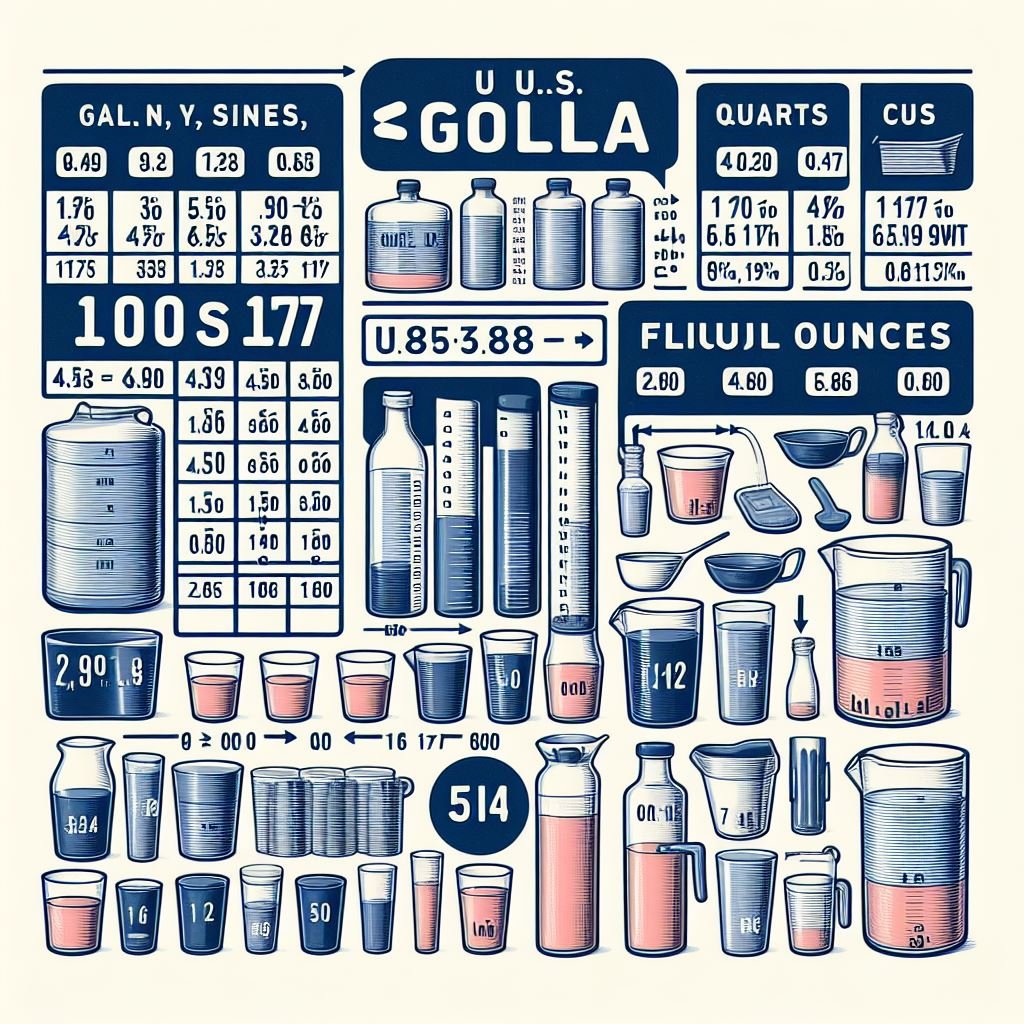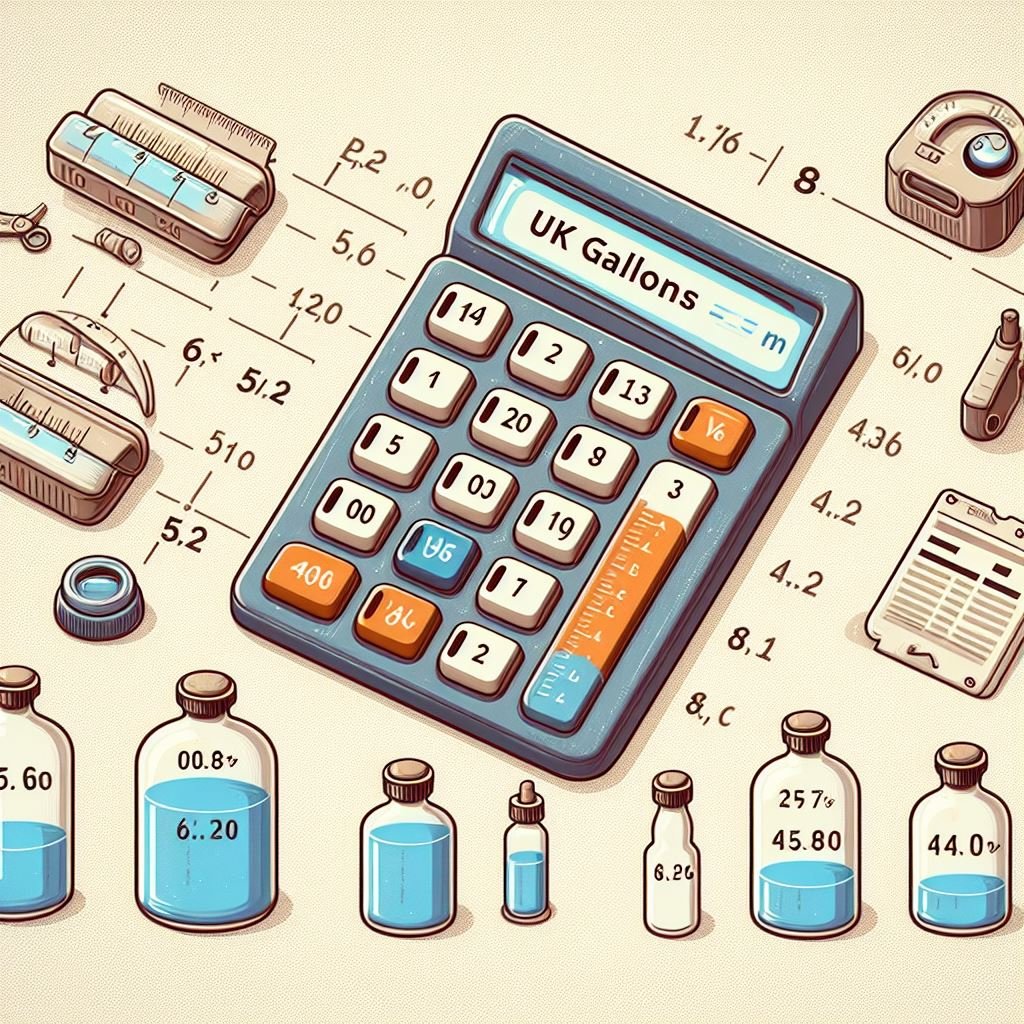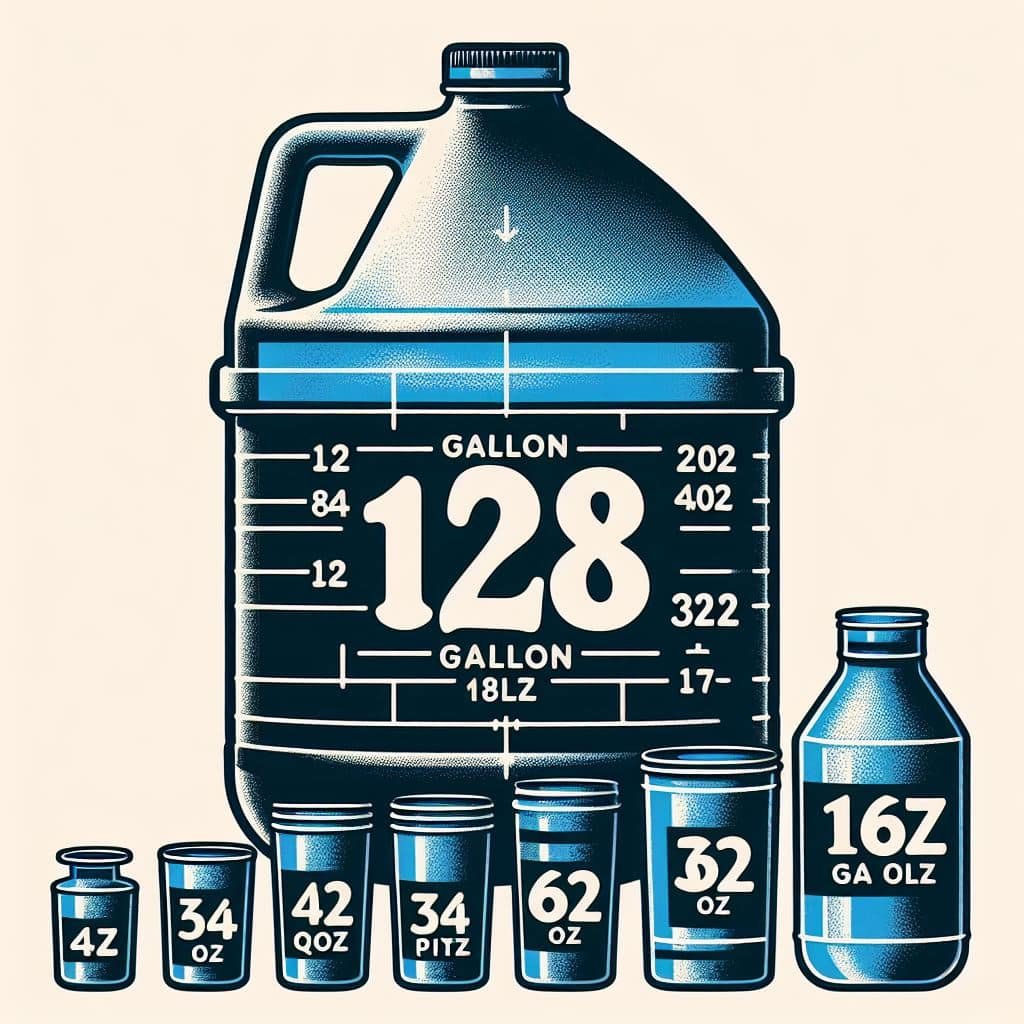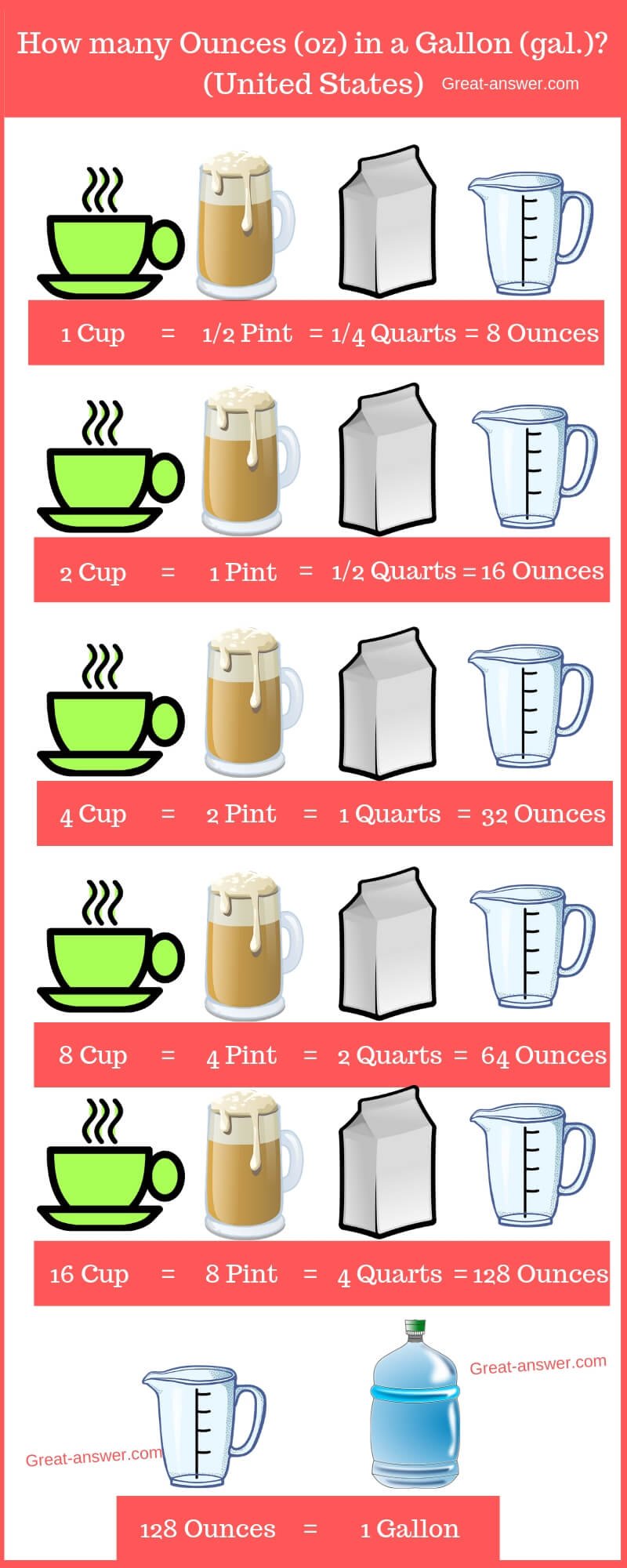How Many Ounces are there in a Gallon depends upon which system we are operating as well as where you are in the world. Because of different countries have adopted different standard units to measure the mass and volume.

Hook: Unraveling the mystery of gallons and ounces
In the realm of measurements, the relationship between gallons and ounces often mystifies many. From cooking to construction, understanding this conversion is essential. Let’s embark on a journey to demystify the intricacies of gallons and ounces, empowering you with the knowledge to navigate daily tasks effortlessly.
Brief overview of the importance of knowing the conversion
In cooking, DIY projects, or even a trip to the grocery store, knowing how many ounces are in a gallon can make a significant difference. This guide aims to provide conversion factors and explore practical applications and pitfalls to ensure a comprehensive understanding.
Preview of key concepts to be covered
We’ll delve into the basics, explore conversion factors for US and UK gallons, discuss practical applications in cooking and everyday life, address common pitfalls, and provide useful tools for easy conversions. By the end, you’ll be equipped with the knowledge to navigate the world of gallons and ounces confidently.
Understanding the Basics

A. Definition of a gallon
Gallons, as a unit of measurement, have a fascinating history. Originally derived from medieval Latin, the term ‘gallon’ has evolved over centuries, with distinctions between the US and UK gallons. The US gallon, used predominantly in North America, equates to 128 fluid ounces, while the UK gallon, common in Britain, equals 160 fluid ounces.
B. Definition of an ounce
Ounces, with roots tracing back to the Roman Empire, play a crucial role in both fluid and weight measurements. Understanding the variations between fluid ounces and weight ounces is fundamental. A fluid ounce represents volume, while a weight ounce measures mass, and these distinctions are crucial in accurate conversions.
The Conversion Factors

A. US Gallon to Ounces

Transitioning into the practical realm, let’s explore the conversion factor for US gallons to ounces, a common conversion in the United States. There are 128 fluid ounces in a US gallon, a straightforward conversion that serves as the foundation for many everyday calculations.
In practical terms, this means that when you encounter a gallon of milk or any other liquid in the US, you can visualize it as containing 128 fluid ounces. This conversion factor is particularly handy in recipes, DIY projects, or when comparing product sizes.
B. UK Gallon to Ounces

Crossing the Atlantic, the UK gallon presents a different conversion challenge. With 160 fluid ounces in a UK gallon, this distinction is crucial when dealing with British measurements. Comparing the US and UK gallons highlights the need for precision in international contexts, preventing errors in calculations.
Practical Applications
A. Cooking and Baking
Transitioning from theoretical knowledge to practical applications, understanding the conversion between gallons and ounces is paramount in the culinary world. Imagine a recipe calling for a gallon of broth; knowing that this equates to 128 fluid ounces allows for accurate ingredient measurement.
Additionally, when scaling recipes up or down, the ability to convert between gallons and ounces ensures culinary success. This knowledge becomes a culinary superpower, enhancing your skills in the kitchen.
B. DIY Projects
In the realm of do-it-yourself (DIY) projects, precision is key. Whether you’re painting a room or mixing concrete for a home improvement task, knowing the conversion from gallons to ounces ensures you purchase the correct amount of materials.
Picture this: you’re at the hardware store, and you need five gallons of paint. Understanding that this equates to 640 fluid ounces helps you plan and budget effectively for your project.
Everyday Conversations

A. Grocery Shopping
Embarking on a trip to the grocery store becomes a more informed endeavor when armed with knowledge about gallons and ounces. Product labels often display quantities in ounces, and understanding the relationship between gallons and ounces allows for quick comparisons and informed purchases.
For instance, when deciding between a gallon-sized container of juice and individual 16-ounce bottles, you can easily calculate that the gallon is a more cost-effective option.
B. Personal Hydration
In the pursuit of a healthy lifestyle, understanding the volume of water intake recommended in gallons and ounces is beneficial. Health experts often recommend a specific daily water intake, and this advice is often provided in ounces.
Armed with this knowledge, you can easily track your daily water consumption, ensuring you meet your hydration goals and maintain optimal health.
Common Pitfalls and Misconceptions
A. Mixing Units
As we navigate the landscape of gallons and ounces, it’s crucial to address common pitfalls. One frequent error is mixing units, where fluid ounces are incorrectly equated with weight ounces.
To avoid this pitfall, always be mindful of the context – whether the measurement is referring to volume (fluid ounces) or weight (ounces). This simple awareness can prevent miscalculations and ensure precision in various applications.
B. Visualizing the Amount
Another common misconception arises when visualizing quantities. Visualizing a gallon of liquid might be challenging, but breaking it down into fluid ounces provides a tangible perspective.
Consider this: a standard water bottle is typically 16.9 fluid ounces. Visualizing that a gallon is roughly equivalent to seven and a half of these bottles can make seemingly large quantities more manageable.
Conversion Tools and Resources
A. Online Conversion Calculators
As technology simplifies our lives, online tools prove invaluable in the realm of conversions. Numerous websites offer user-friendly conversion calculators, allowing you to swiftly convert gallons to ounces and vice versa.
These calculators often support both US and UK measurements, providing flexibility for various applications. Embracing these digital resources can streamline your conversion processes, saving time and ensuring accuracy.
B. Handy Reference Charts
For those who prefer a more tangible approach, creating or utilizing reference charts is an effective strategy. A well-designed conversion chart can be a quick reference guide, allowing you to glance at common conversions without the need for online tools.
Consider keeping a chart in your kitchen or workspace, providing a convenient resource for everyday tasks that involve gallons and ounces.
In Summary: Decoding the Language of Measurements
A. Recap of key concepts
Throughout this exploration, we’ve unraveled the historical roots of gallons and ounces, understood their definitions, explored conversion factors, and applied this knowledge in practical scenarios. From cooking and DIY projects to everyday conversations, mastering gallons and ounces proves essential in various aspects of life.
B. Empowering you with Practical Wisdom
Armed with this newfound wisdom, you’re now equipped to confidently navigate the world of measurements. No longer confined by the mystery of gallons and ounces, you can approach daily tasks with precision and clarity.
Frequently Asked Questions (FAQ)
Q1. Why are there different types of gallons?
A: Historical and geographical factors have contributed to the existence of different gallons. The US and the UK, for example, have distinct measurement systems, resulting in variations in the size of gallons.
Q2. Can I use the same conversion factor for both fluid and weight ounces?
A: No, fluid ounces and weight ounces are different. Fluid ounces measure volume, while weight ounces measure mass. It’s crucial to use the appropriate conversion factor based on the type of ounce you are dealing with.
Q3. Are there other units I should be aware of when dealing with volume measurements?
A: Yes, there are various units like liters, quarts, and pints. Understanding the relationships between these units can further enhance your ability to work with different volume measurements.
Q4. How can I convert gallons to ounces for irregularly shaped containers?
A: For irregular shapes, it’s best to use a liquid measuring cup to find the volume in cups or milliliters, and then convert that to gallons or ounces using the appropriate conversion factors.
Q&A section addressing common reader questions
In conclusion, this comprehensive guide has unveiled the mysteries of gallons and ounces, providing you with the knowledge to confidently navigate the intricacies of measurements. Armed with historical insights, practical applications, and valuable tools, you’re now well-equipped to conquer any task requiring a grasp of gallons and ounces.
Ounces in a Gallon – United States | Infographic

Calculations
It depends on the system we are operating.
By this it means that the variation depends on UK or US system of measurement.
1-gallon measures as 128 ounces in the US measurement
1 Gallon = 128 Ounces (US System)
1-gallon measures as 160 ounces in the UK measurement
1 Gallon = 160 Ounces (UK System)
UK Imperial system and the US system (a variation of the Imperial system). These were probably the most common due to the population, power and reach of the UK and US. While metric SI system came later into the scene.
Ounces in a Gallon with reference to liter
US
1 Gallon (US, Fluid) = 3.785 liters
1 Liters = 33.814 ounces (US fluid)
1 fluid Gallon = 3.785 x 33.814 = 128 ounces
UK
1 Gallon (UK, Fluid) = 4.54609 liters
1 Liters = 35.1951 ounces (UK fluid)
1 fluid Gallon = 4.54609 x 35.1951 = 160 ounces
| Gallon (US) | Ounces (US) | Gallon (UK) | Ounces (UK) |
|---|---|---|---|
| 1 | 128 | 1 | 160 |
| 2 | 256 | 2 | 320 |
| 3 | 384 | 3 | 480 |
| 4 | 512 | 4 | 640 |
| 5 | 640 | 5 | 800 |
| 6 | 768 | 6 | 960 |
| 7 | 896 | 7 | 1120 |
| 8 | 1024 | 8 | 1280 |
| 9 | 1152 | 9 | 1440 |
| 10 | 1280 | 10 | 1600 |
| 11 | 1408 | 11 | 1760 |
| 12 | 1536 | 12 | 1920 |
| 13 | 1664 | 13 | 2080 |
| 14 | 1792 | 14 | 2240 |
| 15 | 1920 | 15 | 2400 |






Thank you for the great post really it help me.
Thank you for the very clear answer. Extremely helpful
Uhhhh, it didn’t help you with your grammar. Try “Thank you for the post, it really helped me.
This also helped me though.